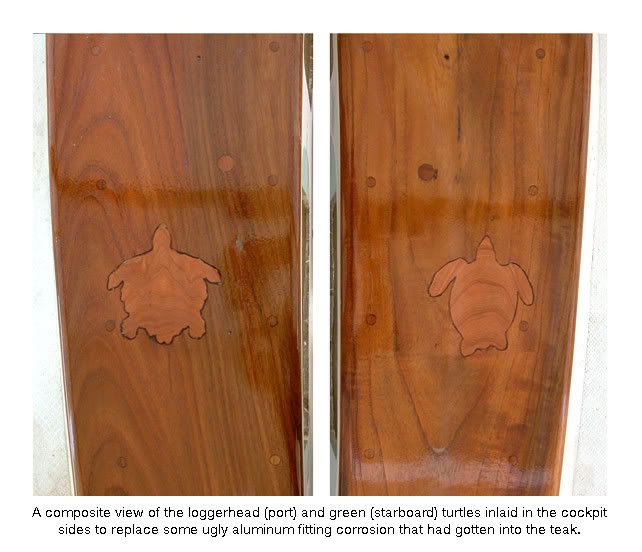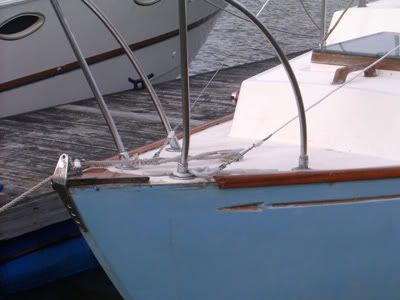By the way, please feel free to correct my nomenclature. I'm not sure that the part I'm referring to is really a "rubrail", but it's just below what I believe is the "caprail" and I don't think gunwale would be the correct term. And it's not a toerail, since toes would never be near it thanks to the built-in bulwark created by the boat's outward flanged hull-deck joint.
How would you folks go about repairing this? I'm looking for a relatively small fix for now since it's primarily aesthetic and not structural. I guess the proper thing to do is eventually replace the entire piece of stock, but that isn't in the cards right now.
My intuitive initial approach is to make straight cuts (via dremel) around the damage and epoxy a piece of new teak in place to fit the void; it would probably have a nearly triangular shape. That way the existing length of lumber that's attached to the boat would retain its curvature and not pop off the boat. Surely someone has a better idea...
The existing structure is: outward-turning hull-deck joint, 1/2" teak caprail on top of joint, and 1/2" teak "rubrail" screwed right into the caprail. Please forgive the poor photos and the poor condition of the teak (Cetol= yuck; fading Cetol=very yuck).






